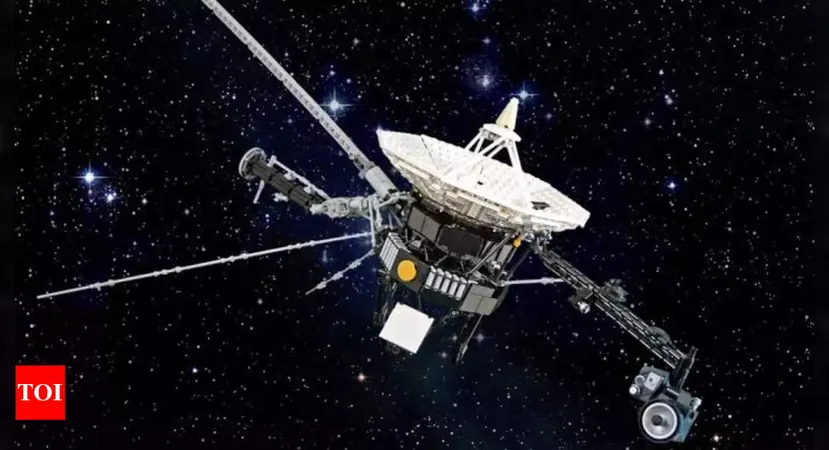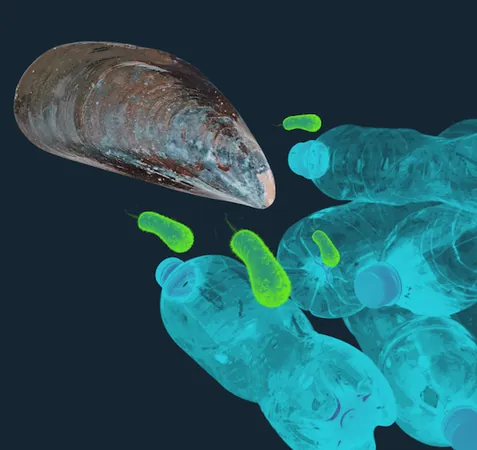
NASA Powers Down Voyager 2’s Plasma Instrument: What This Means for Interstellar Exploration
2024-10-08
Author: Arjun
NASA Powers Down Voyager 2’s Plasma Instrument: What This Means for Interstellar Exploration
In a significant adjustment for its historic Voyager 2 mission, NASA has officially powered down the spacecraft's plasma science instrument to conserve energy on its journey through the far reaches of interstellar space, now over 13 billion miles from Earth. Launched on August 20, 1977, Voyager 2 was initially designed for a five-year mission but has far exceeded expectations, continuing to provide invaluable data for over 47 years.
The decision to deactivate the plasma science instrument, known as the Plasma Science Experiment (PLS), was made on September 26, after engineers sent a command via NASA's Deep Space Network. This communication process involved a considerable wait, taking 19 hours for the command to reach the spacecraft, with an additional 19 hours for confirmation to return to Earth. NASA engineers have carefully monitored the shutdown and reported that Voyager 2 is currently functioning normally, following the successful implementation of the shutdown command.
Voyager 2's PLS played a crucial role in understanding solar winds—streams of charged particles released from the sun's corona. The instrument was equipped with four plasma detectors that collected essential data on ionic and electronic flows, providing insights into how solar winds interact with celestial bodies and the interstellar medium. This research is pivotal as it helps scientists decode the fundamental workings of our solar system and beyond.
As Voyager 2’s power supply diminishes, NASA aims to ensure that at least one scientific instrument remains operational into the 2030s, giving researchers access to rare data from the outer edges of the solar system and beyond. Over the years, NASA has methodically turned off several of Voyager 2’s instruments to conserve plutonium, a power source critical for its operations. To date, six of the original ten instruments have been deactivated, with the plasma science instrument being the latest addition to this list.
Voyager 2 made history by exiting our solar system on November 5, 2018, becoming the first human-made object to enter interstellar space. It travels beyond the heliosphere, where solar winds are no longer dominant, allowing for groundbreaking research in an uncharted region of space. Furthermore, with Voyager 1 and Voyager 2 as the only active probes exploring this frontier, their findings represent a unique opportunity for scientists to deepen their understanding of the cosmos.
As we move forward into the future of space exploration, Voyager 2’s journey illuminates the resilience of human ingenuity and the relentless quest for knowledge, even as we grapple with the challenges of dwindling power resources. Keep an eye on the developments from NASA as they continue to explore the mysteries of our universe through the eyes of these remarkable spacecraft.




 Brasil (PT)
Brasil (PT)
 Canada (EN)
Canada (EN)
 Chile (ES)
Chile (ES)
 España (ES)
España (ES)
 France (FR)
France (FR)
 Hong Kong (EN)
Hong Kong (EN)
 Italia (IT)
Italia (IT)
 日本 (JA)
日本 (JA)
 Magyarország (HU)
Magyarország (HU)
 Norge (NO)
Norge (NO)
 Polska (PL)
Polska (PL)
 Schweiz (DE)
Schweiz (DE)
 Singapore (EN)
Singapore (EN)
 Sverige (SV)
Sverige (SV)
 Suomi (FI)
Suomi (FI)
 Türkiye (TR)
Türkiye (TR)